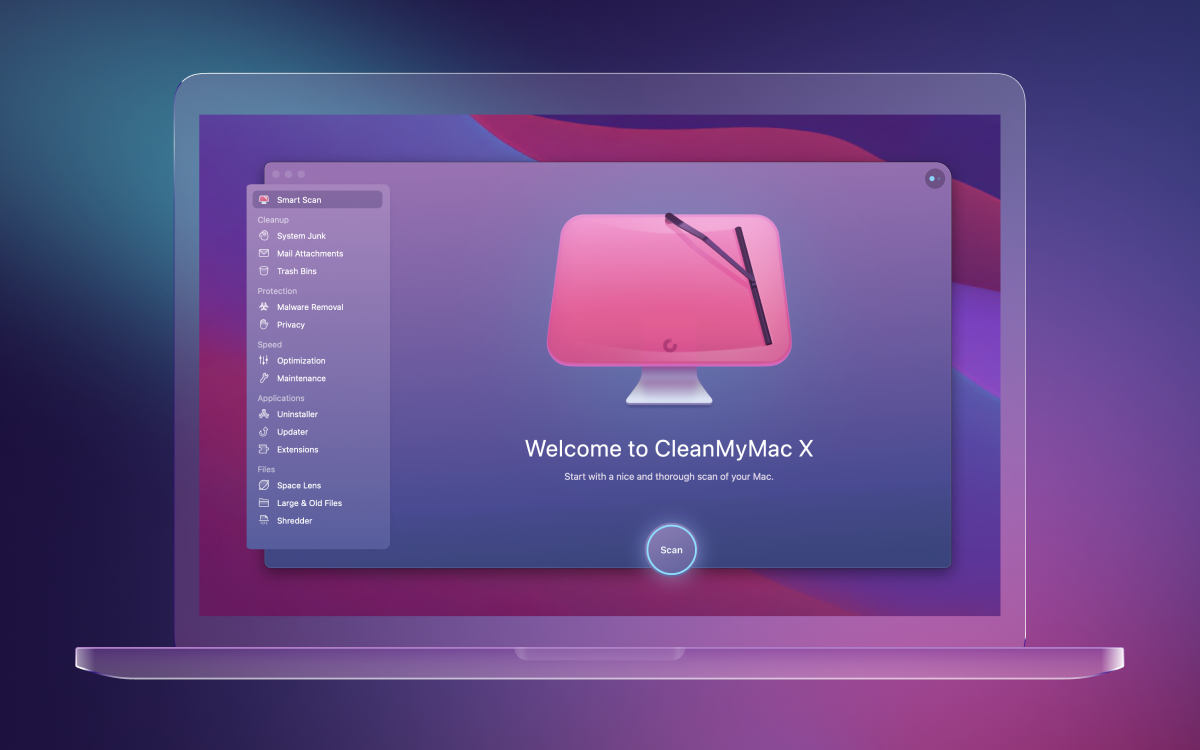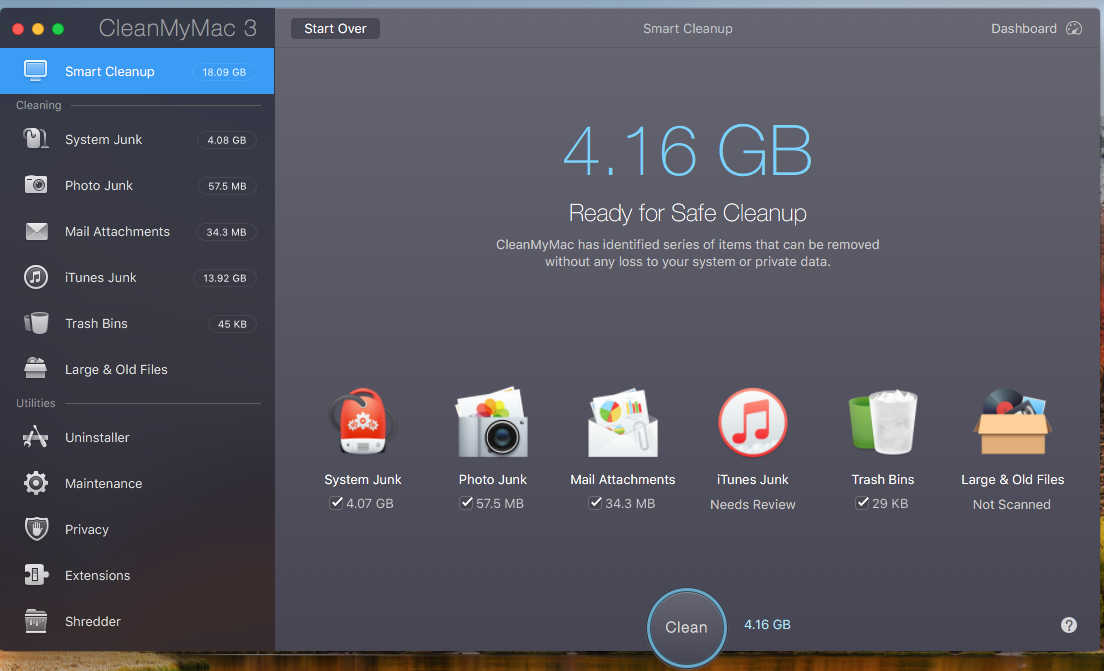Free Software To Clean Up My Mac
It’s spring again, and with the new season comes the age-old ritual of cleaning out things you ignored for most of the year. Far be it from me to suggest that you clean out your basement, garage, or attic, but I would be remiss if I didn’t recommend you take a closer look at the crusty corners of your Mac. Last year, Chris Breen shared valuable Tips for a tidier Mac—all of which are worth revisiting. But I also want to draw your attention to a half-dozen digital dust bunnies that you might not have considered:
1. Get rid of old iChat logs
If you use iChat, you can have the program store logs of your chats. (Go to iChat -> Preferences, click on Messages, select Save Chat Transcripts To, and then choose a folder.) By default, the program saves transcripts in a folder called iChats in your Documents folder, but you can choose a different location to store these files.
Keep your software up to date. In the Software Update preference pane, you can configure automatic notifications of updates to OS X and other Mac App Store products. Some third-party applications from other sources have a similar feature, if you don’t mind letting them phone home.
With this preference set, iChat saves a log file of every chat. This is a great idea (and especially helpful at work) if you often need to refresh your memory about a conversation. But if you send images inline during chats, these files may take up a lot of space. If you look inside the iChats folder, you’ll see that the files are organized by date. While you may want to save recent chat logs, you may have months of files you can trash, saving a lot of disk space.
- Here’s the only legit tool for a health check, Mac speed up and protection. Get a smoothly-running system in no time — CleanMyMac X is incredibly easy to use. Get started for free.
- To simplify your selection, we have here shortlisted the top 16 best free Mac cleaner software that you could try in 2021 to clean and optimize your Mac. Our 3 Top Choices. Finds & cleans all kinds of junk files. Creates a protective shield around Mac. Recovers a large amount of storage space.
- Final words for this best Mac cleaning software. If your aim is to keep your Mac free from digital debris then this app is great for you. Not all the Mac cleaners are effective when it comes to cleaning hidden garbage of the apps. The trial version is available for free for this Mac cleaner software.

2. Delete application backups
Many programs offer automatic backups, and store copies of files in a selected folder, just as iChat saves chat logs. Two programs I use often—Bare Bones Software’s BBEdit and The Omni Group’s OmniFocus—do this. Some applications, such as OmniFocus, let you choose the location for the backups; others, like BBEdit, don’t. BBEdit stores its backups in a BBEdit Backups folder in my Documents folder; I have OmniFocus store its backups in my Documents folder as well.
If you use any application that saves backups, you may find that it has tucked away several gigabytes of duplicate files, depending on how the program saves them. (BBEdit saves a new backup every time you save a file.) Deleting these backup files can save space, and make searching via OS X’s Spotlight much easier.
While you’re at it, check in youruserfolder/Music/iTunes folder; you may find a Previous Libraries folder, which includes copies of your iTunes libraries that were saved after you installed a new version.
3. Get rid of Mail downloads
When you receive attachments to e-mail messages in Apple’s Mail, the files are stored with your messages at first. But if you double-click an attachment to view it, or if you use QuickLook to glance at it, Mail stores a copy in your youruserfolder/Library/Mail Downloads folder. You may have dozens of files here occupying a huge amount of space. You can generally delete these without worry. If you still have the original messages, the attachments are part of those messages. If not, you may have already saved the attachments to your hard disk.
4. Delete log files
Your Mac stores lots of log files, most of which you never need to review. Open the Console application (in /Applications/Utilities), to see a list in the Console Messages window sidebar.
You can delete many of these files without affecting your Mac, and you can save significant space, since some of these files can be quite large. For instance, in the screenshot above, you can see a number of system.log files. The first one—system.log—is the current file, but the others, with the .bz2 suffix, are archived files.
Delete these files with Titanium Software’s free utility Onyx. Launch the program, click on Cleaning in the toolbar, and then click on the Logs tab. Check System Archived Logs, and then click Execute. While you’re using Onyx, check out the many other files that the program can delete to clear up space on your Mac.
YouWave for Mac. YouWave by YouWave is a popular Android emulator and manager that can create an Android virtual machine on your system. Unfortunately, YouWave for Mac has not been released yet, but there is a number of Mac apps with similar features, and they are available on this list. So if you were looking for YouWave for Mac, you can try these tools instead. Youwave pour mac. Download thousands of apps online via app stores within youwave High performance – The fastest way to run Android on pc Easy to use – Easy to install. Easy to import and run apps Purchase with PayPal for instant transaction. Key Technical Features. Youwave For Mac Author: rashdir Keywords: rashdir Created Date: 8/2/2021 3:21:30 AM. Free Android emulator for PCs. YouWave is a free application that lets you emulate your Android mobile phone screen on your Microsoft Windows PC desktop. The free download will give you an older version of the software, while the premium version lets you use the most recent software update. A trial version of the paid edition is available to try for a certain period of time.
5. Weed out iTunes dupes
If you’re cavalier about how you monitor your iTunes library, you may have a lot of duplicate files. iTunes has a built-in feature to help you find duplicates, to see if you copied some files twice, or if you have the same songs on original albums and others from best-of albums.
To use this feature, choose File -> Display Duplicates. This shows all tracks that share the same name and artist. If you hold down the Option key when you select the File menu, the menu item changes to Display Exact Duplicates. This sorts for duplicates where the name, artist, and album match. Check these files carefully. You may find some that you can get rid of, saving space not only on your Mac, but also on your iPad or iPhone.
Still, iTunes’ duplicate search is limited. Doug Adams’ $15 Dupin gives you much more power to weed out duplicates, sorting by a variety of different criteria. If you add lots of music to your iTunes library, Dupin is a great way to slim it down.
6. Reset Safari
If you use Apple’s Safari, some of the program’s features can take up unnecessary space. For instance, the cache file is intended to make your browsing snappier, but can easily consume hundreds of megabytes. When it gets too big, it can actually slow down browsing. History files can make Spotlight searching sluggish. And Top Sites, Website preview images, and Website icons (favicons) can slow down the program as well.
Every now and then it’s a good idea to reset Safari. Choose Safari -> Reset Safari and check the options that interest you.
I don’t reset or delete everything—you can see my choices in the screenshot above. Choose what’s most important to you, and reset Safari every now and then to speed up your browsing and save disk space.
One last tip: have you looked in your Downloads (youruserfolder/Downloads) folder lately? You may find plenty of unneeded copies of files there too.
Senior contributor Kirk McElhearn writes about more than just Macs on his blog Kirkville. Twitter: @mcelhearn Kirk’s latest book is Take Control of iTunes 10: The FAQ.
Over time, your Mac probably accumulates a lot of cruft. Old applications you no longer use, data you have no use for, a desktop full of icons (only four of which you actually ever use)…you know what I mean. With so many people working from home lately, the problem has only gotten worse.
Now is as good a time as any to tidy up your Mac, freeing up storage space and probably CPU cycles and RAM in the process. Here are a few tips to make quick work of your Mac “spring cleaning.”
Optimize Storage
Open the Storage Management app, either by using Spotlight (Command-space) or by clicking the Apple logo in the upper left of the menu bar, choosing About This Mac, clicking the Storage tab, then Manage.
In the Recommendations tab you’ll see a number of useful options, like Store in iCloud and Empty Trash Automatically. The Optimize Storage solution will get rid of things like old TV shows you’ve already watched and old email attachments when you’re low on storage space.
Take a look at your Applications and Documents
While you’re in the Storage Management app, click on the Applications tab in the left column. You can see all your installed applications here and sort them by size, easily deleting apps you haven’t used in ages.

Then, click on Documents in the left tab. There are several sections here, like Large Files and Unsupported Apps, that are worth perusing. Big library files (for apps like Lightroom or Final Cut Pro) are likely to show up here, and you might not want to mess with them. But you may have old large files and documents, or apps that no longer even work on your version of macOS, that you can safely remove.
Get your desktop under control
Free Software To Clean Up My Mac Air
If your desktop is littered with icons, you should probably tidy things up a bit. Right-click (two-finger tap on a trackpad) any open space and choose Clean Up to get things arranged neatly, or Clean Up By to sort them as well. Consider the Use Stacks feature to automatically stack-up files of the same type into a single icon. Just click on that icon to open the stack. This can really tidy up your desktop!
Try DaisyDisk
Power users that really want to clean out their Mac’s storage may want to check out a third party app like DaisyDisk ($9.99). It’s a simple and clear way to see everything on your Mac, or any other attached storage device or drive. It can do things like dig into the mysterious “Other” category and help you clear out what you don’t need.
Free Software To Clean Up My Mac Os
It may seem unnecessary to pay money for an app that just helps you delete stuff from your Mac’s storage, but there’s a lot of value in disk analyzers like this. It can really be eye-opening to see exactly what’s filling up your Mac’s SSD.